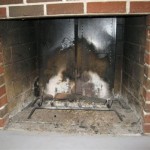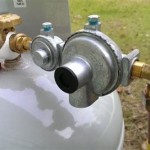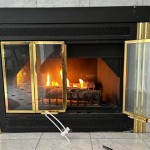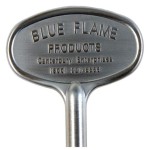Here is an article on Large Outdoor Fireplaces, formatted as requested:
Large Outdoor Fireplaces: A Guide to Creating a Dramatic Focal Point
Large outdoor fireplaces represent a significant investment in outdoor living spaces. They serve as powerful focal points, providing warmth, ambiance, and a gathering place for social interaction. These structures differ considerably from smaller fire pits or chimineas due to their scale, permanence, and often, their architectural integration into the surrounding landscape.
The decision to incorporate a large outdoor fireplace requires careful consideration of several factors, including budget, space availability, local regulations, and intended usage. A poorly planned or constructed fireplace can be both aesthetically displeasing and potentially hazardous. Conversely, a well-designed and properly installed fireplace can dramatically enhance the enjoyment and value of a property.
This article will explore key aspects of large outdoor fireplaces, covering design considerations, material choices, construction processes, and safety guidelines, providing a comprehensive understanding of what is involved in creating a stunning and functional outdoor feature.
Design Considerations for Large Outdoor Fireplaces
Planning the design is a critical first step. This involves determining the desired size, style, and location of the fireplace. The scale of the fireplace should be proportional to the surrounding space. A massive fireplace in a small courtyard might overwhelm the area, while a smaller fireplace in a large backyard could appear insignificant. Consider the existing architectural style of the house and landscape to ensure the fireplace complements the overall aesthetic.
Style options range from rustic and traditional to modern and contemporary. Rustic fireplaces often incorporate natural stone and rough-hewn timbers, while modern designs may feature clean lines, concrete, and stainless steel accents. The chosen style should reflect the homeowner's personal preferences and the overall design theme of the outdoor space.
Location is paramount. The fireplace should be situated in a way that maximizes its usability and minimizes potential hazards. Consider prevailing winds to avoid smoke blowing into seating areas or towards the house. Ensure adequate clearance from flammable materials, such as trees, shrubs, and fences. Compliance with local building codes and fire safety regulations is essential when determining the placement of the fireplace.
Furthermore, the design should incorporate functional aspects such as seating arrangements, fuel storage, and potentially an integrated cooking surface. Built-in benches or seating walls can enhance the fireplace's usability as a gathering place. Adequate storage for firewood or propane tanks is crucial for convenience. Some designs even incorporate grills or pizza ovens, expanding the fireplace's functionality beyond simply providing warmth and ambiance.
The design phase also involves considering the visual impact of the fireplace. It should be aesthetically pleasing from all angles, both when it is in use and when it is not. Landscaping elements, such as plantings and pathways, can be used to enhance the fireplace's visual appeal and integrate it seamlessly into the outdoor environment. Lighting is another important consideration. Strategically placed lighting can highlight architectural features and create a warm and inviting atmosphere.
Material Choices and Construction
The materials used in the construction of a large outdoor fireplace significantly impact its aesthetic appeal, durability, and cost. Common materials include natural stone, brick, concrete block, stucco, and manufactured stone veneer. Each material possesses unique characteristics that make it suitable for different design styles and environmental conditions.
Natural stone offers a timeless and elegant look. Options range from fieldstone and river rock to flagstone and limestone. Natural stone is durable and weather-resistant, but it can be more expensive than other materials. The installation process can also be more labor-intensive due to the irregular shapes and sizes of the stones.
Brick is a classic choice that provides a warm and inviting feel. It is relatively affordable and easy to work with. Brick is also fire-resistant and durable, making it a suitable material for fireplace construction. However, brick can be susceptible to weathering and staining over time.
Concrete block is a versatile and cost-effective material that can be used to create a variety of designs. It is strong and durable, but it lacks the aesthetic appeal of natural stone or brick. Concrete block is often used as a structural base for a fireplace that is then clad in a more decorative material, such as stone veneer or stucco.
Stucco is a cement-based plaster that can be applied to concrete block or other surfaces. It is a relatively inexpensive option that can be customized with different textures and colors. Stucco is a good choice for modern or contemporary designs. However, it can be susceptible to cracking and requires regular maintenance.
Manufactured stone veneer is a lightweight alternative to natural stone. It is made from concrete and molded to resemble natural stone. Manufactured stone veneer is more affordable than natural stone and easier to install. It is a good option for homeowners who want the look of natural stone without the expense or weight.
The construction process typically involves creating a solid foundation, building the firebox, constructing the chimney, and finishing the exterior. A proper foundation is essential to prevent settling and cracking. The firebox should be constructed of fire-resistant materials, such as firebrick or refractory concrete. The chimney should be sized appropriately to ensure proper drafting and prevent smoke from backing up into the seating area.
The exterior finish can be applied after the structural elements are in place. This involves applying the chosen material, such as stone, brick, or stucco, and adding any decorative details. Proper drainage and weatherproofing are crucial to protect the fireplace from the elements and prevent damage over time.
Safety Considerations and Regulatory Compliance
Safety should be the top priority when designing, constructing, and using a large outdoor fireplace. Potential hazards include fire, smoke inhalation, and structural collapse. Adhering to safety guidelines and complying with local regulations are essential to minimize these risks.
Local building codes and fire safety regulations often dictate specific requirements for outdoor fireplaces. These may include minimum distances from structures, chimney height restrictions, and requirements for fire extinguishers or other safety equipment. Contacting the local building department or fire marshal is crucial to ensure compliance with all applicable regulations.
Proper ventilation is essential to prevent smoke inhalation. The chimney should be sized appropriately to ensure proper drafting. The fireplace should be located in an area with good air circulation. Avoid using the fireplace on windy days, as this can cause smoke to blow into seating areas.
Fire safety is paramount. Always keep a fire extinguisher or garden hose nearby when using the fireplace. Never leave a fire unattended. Keep flammable materials, such as furniture and curtains, away from the fireplace. Supervise children and pets closely when the fireplace is in use. Dispose of ashes properly in a metal container.
Regular maintenance is essential to ensure the long-term safety and functionality of the fireplace. Inspect the fireplace regularly for cracks, loose stones, or other signs of damage. Repair any damage promptly. Clean the chimney regularly to remove creosote buildup, which can be a fire hazard.
It is advisable to hire a qualified contractor with experience in building outdoor fireplaces. A professional contractor can ensure that the fireplace is constructed safely and according to code. They can also provide valuable advice on design, materials, and construction techniques.
Beyond the immediate construction and operation, responsible fuel sourcing is an ongoing safety consideration. If using wood, ensure it is properly seasoned to minimize smoke and maximize heat output. Avoid burning treated wood, which can release harmful chemicals into the air. Consider using alternative fuel sources, such as propane or natural gas, which offer cleaner burning and easier operation.

Outdoor Fireplaces Charlotte Fireplace Design Coogans Build

Outdoor Fireplaces Firepits And Fire Features Sierra Hearth Home

Fire Pit Outdoor Fireplace Vista Oceanside Carlsbad Escondido Encinitas San Diego Area

Outdoor Linear Fireplace In Anaheim Calmantel

Single Sided Ready To Finish Gas Fireplace Outdoor Greatroom Greatrooms

Five Fabulous Outdoor Fireplace Ideas Coogans Landscape Design

How To Build An Outdoor Stacked Stone Fireplace

Grand Fireplace Kit Parr Lumber
.aspx?strip=all)
5 Benefits Of Outdoor Fireplaces Regency

Outdoor Fireplace Kits Stonewood S Cape Cod Ma Nh Ct
Related Posts








